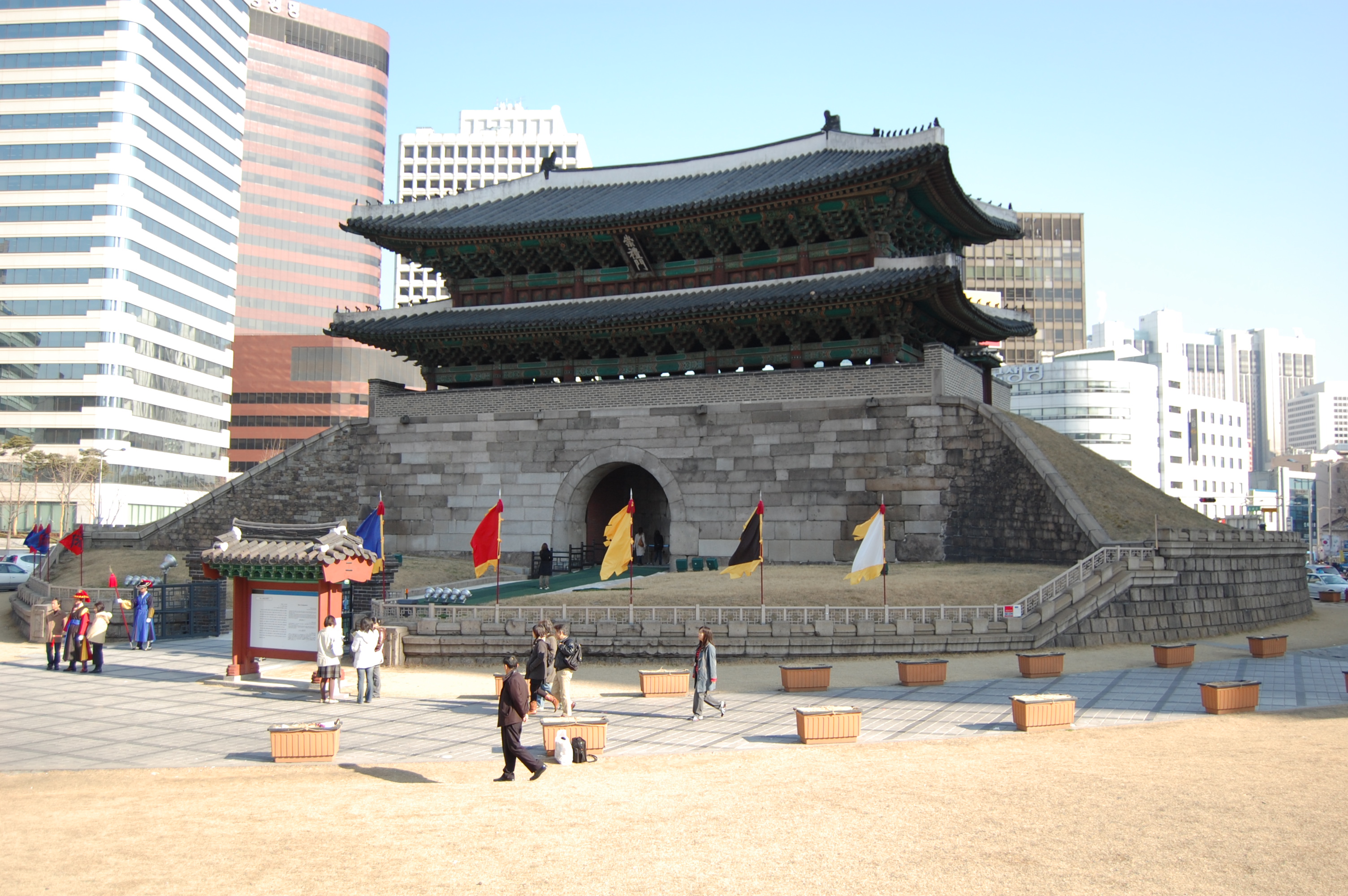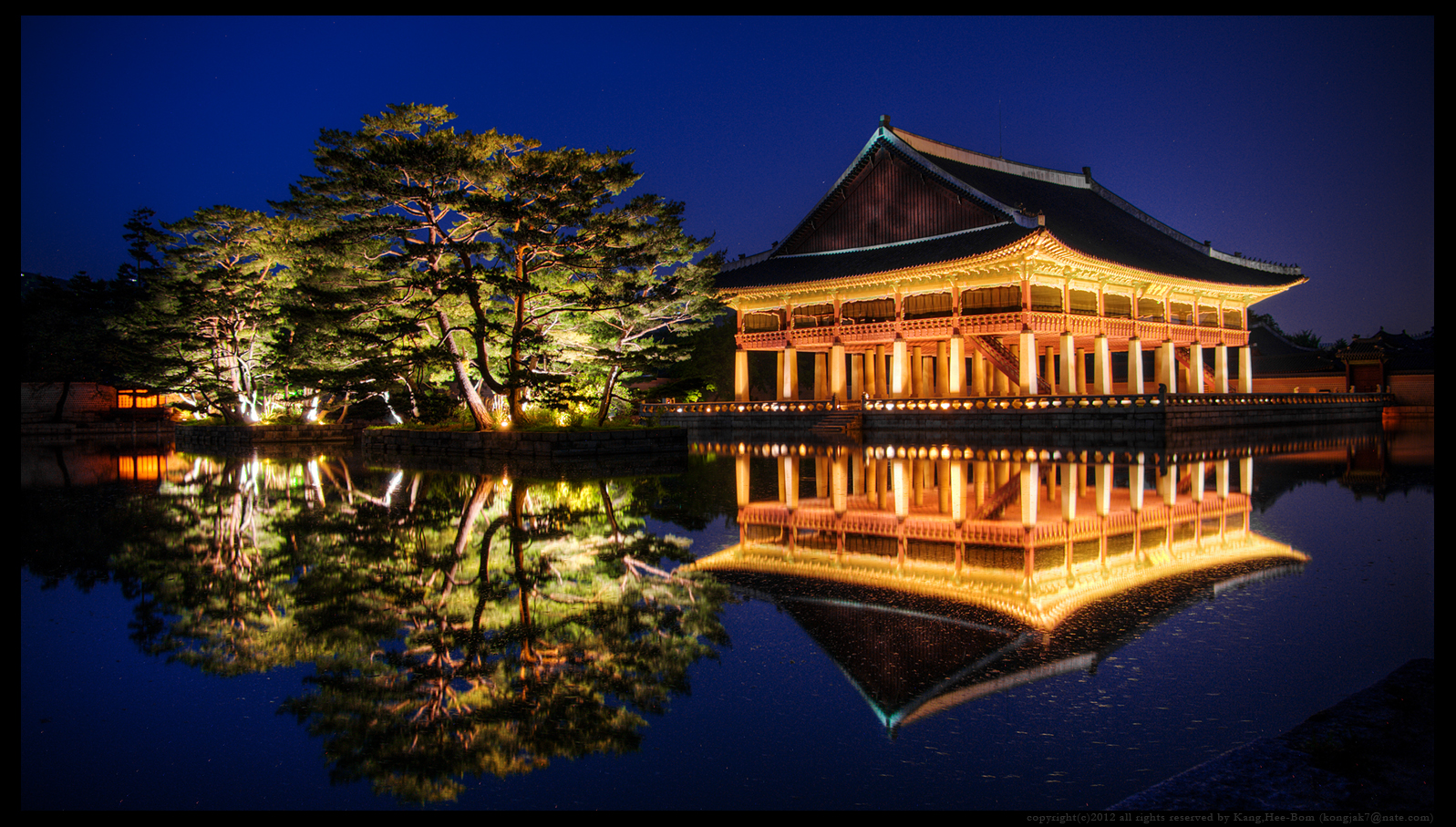

A construction usually rises from a stone subfoundation to a curved roof covered with tiles, held by a console structure and supported on posts;
walls are made of earth (adobe) or are sometimes totally composed of movable wooden doors.there is always a transitional space between the "inside" and the "outside."
The console, or bracket structure, is a specific architectonic element that has been designed in various ways through time.
If the simple bracket system was already in use under the Goguryeo kingdom (37 BC – 668 AD)—in palaces in Pyongyang, for instance—a curved version, with brackets placed only on the column heads of the building, was elaborated during the early Goryeo (Koryo) dynasty (918–1392).
The Amita Hall of the Buseok temple in Yeongju is a good example. Later on (from the mid-Koryo period to the early Joseon dynasty), a multiple-bracket system, or an inter-columnar-bracket set system, was developed under the ancient Han dynasty in China influence during the Mongolian Yuan dynasty (1279–1368).
In this system, the consoles were also placed on the transverse horizontal beams. Seoul's Namdaemun Gate Namdaemun, Korea's first national treasure, is perhaps the most symbolic example of this type of structure.
In the mid-Joseon period, the winglike bracket form appeared (an example is the Yongnyongjon Hall of Jongmyo, Seoul), which, according to some authors, better suited the peninsula's poor economic situation that resulted from repetitive invasions.
Only in buildings of importance like palaces or sometimes temples (Tongdosa, for instance) were the multicluster brackets still used.
Korean Confucianism also led to more sober and simple solutions.
There are Five Grand Palaces in Korea, which are Gyeongbokgung, Changdeokgung, Deoksugung, Changgyeonggung,and Gyeonghuigung."Gung" means palace.
Gyeongbokgung
Built in 1395, Gyeongbokgung Palace is arguably the most beautiful, and remains the largest of all five palaces. The premises were destroyed by fire during the Imjin War (Japanese Invasions, 1592-1598). However, all of the palace buildings were restored under the leadership of Heungseondaewongun during the reign of King Gojong (1852-1919). The most representative edifices of the Joseon Dynasty, Gyeonghoeru Pavilion and Hyangwonjeong Pond have remained relatively intact. Woldae and the sculptures of Geunjeongjeon (The Royal Audience Chamber) represent past sculptures of contemporary art. Gyeongbokgung has inner gates, and outer gates to the north, south, east and west. One of the gates called KeunJeongMoon (The Third Inner Gate). Gyeonghoeru is a hall used to hold important and special state banquets during the Joseon Dynasty.



